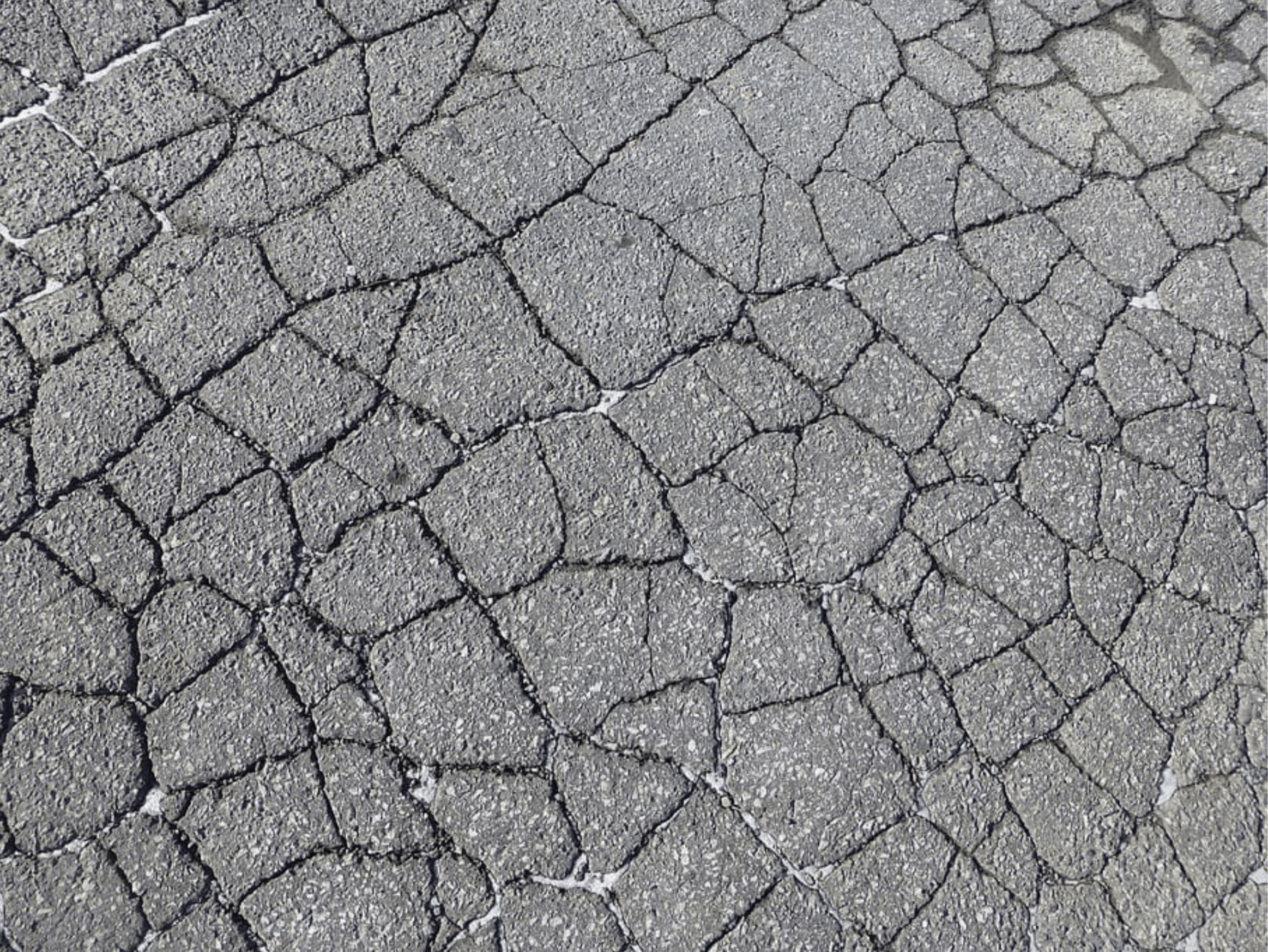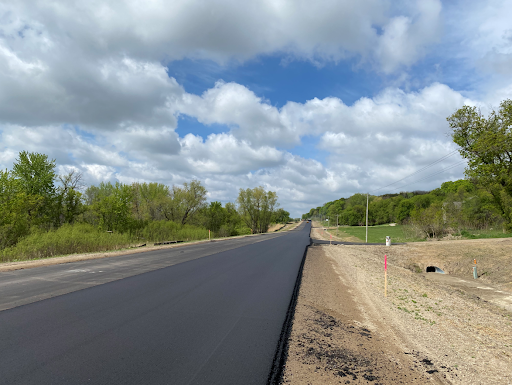Hot Mix Asphalt Paving: The Key to Smooth, Angled Parking Lot Surfaces
Hot Mix Asphalt Paving: The Key to Smooth, Angled Parking Lot Surfaces
Blog Article
Exploring the Environmental Advantages of Warm Mix Asphalt
The use of Hot Mix Asphalt in facilities jobs offers an engaging case for lasting advancement and ecological stewardship. By delving right into the complex details of its manufacturing procedures and the innovative use recycled products, a deeper understanding arises of how this technology surpasses simple surface area applications. The ecological benefits of Warm Mix Asphalt prolong far past initial impressions, using a nuanced point of view on exactly how this product can pave the method for a greener future.

Minimized Greenhouse Gas Emissions
The production process of Hot Mix Asphalt includes heating the combination of accumulation and asphalt binder to high temperatures. By incorporating reclaimed asphalt sidewalk and recycled asphalt tiles right into the mix, the requirement for virgin materials is lowered, leading to power cost savings and reduced discharges connected with extraction and processing.
Studies have actually revealed that Hot Mix Asphalt pavements have a smaller carbon impact over their life process compared to various other sidewalk options. The longevity and recyclability of Warm Mix Asphalt further boost its ecological benefits by reducing the need for regular maintenance or replacement, thereby preserving resources and minimizing emissions related to reconstruction tasks.
Power Performance and Conservation
The manufacturing procedure of Warm Mix Asphalt not only lowers greenhouse gas exhausts yet likewise adds significantly to power efficiency and conservation efforts. Power efficiency is a crucial advantage of Hot Mix Asphalt manufacturing compared to various other sidewalk types. The process entails heating the products at heats to create the asphalt mix, which calls for much less energy than alternate methods. Additionally, the capacity to recycle and reuse asphalt sidewalk better improves power preservation. By incorporating reclaimed asphalt pavement (RAP) into brand-new blends, the industry saves energy that would certainly have been required to produce completely brand-new materials. The resilience of Warm Mix Asphalt lowers the frequency of maintenance and restoration, leading to lasting power savings. This longevity lessens the energy-intensive procedures associated with constant repairs and replacements. Overall, Hot Mix Asphalt stands apart as an ecologically pleasant alternative that focuses on power performance and preservation throughout its lifecycle.
Lasting Sidewalk Solutions

One key aspect of sustainable pavement options is the usage of recycled products such as reclaimed asphalt pavement (RAP) and recycled asphalt shingles (RAS) By integrating these materials into the asphalt blends, the need for virgin resources is decreased, causing reduced power usage and greenhouse gas discharges during production. Additionally, the reuse of these materials helps divert waste from land fills, adding to an extra round and lasting economic situation.
In addition, lasting sidewalk services focus on optimizing sidewalk layout to boost efficiency and durability. Techniques such as warm mix asphalt (WMA) and rock mastic asphalt (SMA) boost the longevity and strength of pavements, reducing the demand for constant repairs and replacements. By implementing these cutting-edge strategies, facilities developers can develop sidewalks that not only meet high-performance criteria however likewise minimize their ecological footprint.
Minimized Environmental Influence
With an emphasis on sustainability and eco-conscious practices, sidewalk options are designed to decrease the ecological impact of building and construction and maintenance processes. Hot mix asphalt, particularly, uses several advantages that add to lowering the general ecological impact of roadway facilities. One essential facet is the recyclability of asphalt, which can be reused numerous times without compromising its top quality. This particular assists in preserving all-natural sources and minimizing the amount of waste sent out to landfills.
Moreover, the production of warm mix asphalt produces reduced degrees of greenhouse gases compared to various other sidewalk materials, making it a much more eco-friendly option. The power efficiency of asphalt plants has also enhanced throughout the years, leading to reduced fuel intake and reduced exhausts. Additionally, the smooth surface of hot mix asphalt minimizes rolling resistance for lorries, causing reduced fuel consumption and decreased air pollution from automobile exhausts.
Payment to Climate Modification Reduction
Hot mix asphalt plays a vital duty in mitigating environment adjustment via its lasting buildings and reduced environmental impact. One substantial payment to climate change mitigation originates from the power effectiveness of warm mix asphalt production. Compared to other sidewalk choices, the manufacturing procedure for warm mix asphalt eats much less energy and discharges reduced levels of greenhouse gases, thus decreasing its overall carbon impact.
In addition, warm mix asphalt's capability to show sunlight, known as albedo, aids in lowering metropolitan warm island effects. By decreasing warmth absorption and retention, hot mix asphalt pavements can decrease the need for air conditioning in urban areas, as a result decreasing greenhouse gas exhausts connected with energy intake for cooling purposes.
In addition, the toughness and recyclability of hot mix asphalt better improve its climate adjustment mitigation capabilities. Regrading. The lengthy lifespan of asphalt sidewalks decreases the need for constant repair work or substitutes, eventually lowering the carbon exhausts linked to roadway maintenance tasks. Furthermore, the recyclability of asphalt products reduces the need for virgin resources and decreases the environmental influence of pavement building and construction, lining link up with lasting practices for environment change mitigation.
Conclusion
In final thought, the ecological benefits of Hot Mix Asphalt show its significant payment to lowering greenhouse gas discharges, preserving power, and minimizing ecological influence. This sustainable pavement option straightens with climate change mitigation efforts, advertises resource preservation, and boosts facilities development. By using recycled products, energy-efficient Get the facts manufacturing procedures, and durable design, Hot Mix Asphalt plays a vital duty in fostering a more eco-friendly technique to framework building and construction.
The manufacturing procedure of Hot Mix Asphalt involves heating the mixture of aggregate and asphalt binder to high temperatures. By incorporating reclaimed asphalt pavement and recycled asphalt shingles into the mix, the need for virgin materials is reduced, leading to power savings and lowered exhausts linked with removal and handling.
One secret element of sustainable pavement solutions is the use of recycled products such as redeemed asphalt sidewalk (RAP) and recycled asphalt roof shingles (RAS) Techniques such as warm mix asphalt (WMA) and rock mastic asphalt (SMA) boost the longevity and resilience of sidewalks, lowering the requirement for regular repair work site and replacements. Contrasted to various other pavement options, the manufacturing procedure for warm mix asphalt takes in less energy and produces lower degrees of greenhouse gases, therefore decreasing its overall carbon impact.
Report this page